Updated on March 27, 2021
Bamboo Kung Fu Training Philosophy
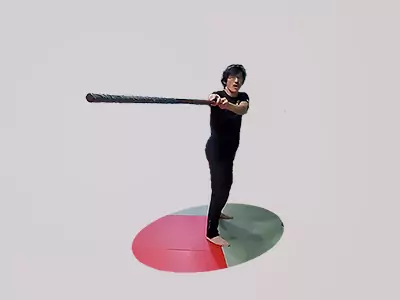
We don't want to just practice forms, drills, over and over again without understanding where the faults are.
Instead, simply re-aligning posture can improve the quality of the kung fu techniques. Biomechanics will help us magnify our efforts efficiently.
Martial arts practice has dramatically seen a surge in popularity in the last decade as a result of the popularity of various mixed martial arts competitions. Recreationally, most of us practice martial arts, primarily, for its physical and mental health benefits. The secondary benefits are gaining self-defence knowledge and be able to physically apply ourselves and potentially participate in a competition to test our skills.
In contrast to most other sporting activities, the repertoire of movement ranges and combinations in martial arts is extensive. This helps challenge our bodies to adapt to numerous movement planes and variations — a big benefit to our mobility and reduces the risk of severe injury.
We often hear phrases or the likes “…mastering kung fu skills will take me 10 years. It’s far too long to achieve my goals. …”
Some kung fu practitioners pursue their studies through grit and diligent triage, hopeful to discover the solutions to the challenges. Before you know it, 10 years had passed. The question then is, "can the time frame be shortened?"
On the flip side, we will still gain the huge benefit of physical fitness regardless of the quality of our techniques.
By the way, power and speed is not everything in martial arts. Sufficiently powerful and comparably fast and agile techniques are necessary. More importantly, good timing and positioning are essential in any practical martial art application.
Targeted guidance
At Bamboo Kung Fu, our philosophy of training is a targeted guidance approach.

In our training approach, we identify weaknesses or issues and address them. Executing kung fu techniques is complex, there are many components and elements that can affect their effectiveness. So, it can be overwhelming and can be discouraging.
Instead of just mindlessly bashing pads for thousands of hours, we intend to understand the cause and effect and resolve the issues. This will optimize and therefore provide a more effective training program.
No repetitive mindless training
A lot of us may have asked ourselves these questions. “How can I get faster?” “How do I produce stronger strikes in my kung fu?”
Most likely, we’ve been told to: …move faster or …put in more strength in your strikes… But how? At this point, I have reached the stage of the proverbial meme of “banging my head against the wall.” Do I have to lift weights to get stronger? Do I have to practice speed drills?
If the posture of the technique is incorrect, simply re-aligning the posture can boost power output or help increase the speed of the technique.
Mindlessly doing speed drills or strength training may not solve the issue of incorrect posture for the technique. Regardless of improvement in strength, one may not efficiently execute the needed technique. It’s like trying to fill up a leaky water barrel before finding out there is a leak.
Firstly, we need to have an idea of the inner workings of the inside of our own bodies. Upon understanding the human body then, we can appreciate the reasons for the training methods and be more engaged in our training.
Human anatomy and biomechanics
Having some basic concepts on the functions of the human body, we can effectively train the various parts of the body. Here are some simple examples that we have dealt with in our activities of daily living:
- It’s easier to pick up a weight when it is held close to the center of our body than when holding the same weight with our arms fully stretched out away from the center of our body.
- It is easier to maintain our balance when we squat down to lower our centre of gravity than when standing higher up.
- We able to throw a ball further away if we have a running start than from standstill.
The myriad combinations of various joint movement angles allow us to perform various complex movement gaits that are not easily duplicated in any single piece of machinery or device, even in today’s 21st-century technology knowledge.
Physical anatomical adaptation
Our bodies progressively weaken if we are not exposed to challenges. The challenges can be in the form of climbing, jumping, running, bounding, lifting. Our muscles will only "decide" to get stronger only if stimulated to do so. Unfortunately, the transformation is not instantaneous. As the stimulation drive transformations at the cellular level, we will only realize some minor improvements from the training effect after a period of time, possibly after 2 to 3 weeks of consistent training. In the process, we’ll experience muscle soreness which warrants a recovery period to build the body stronger.
Over a period of time, as our tissues and muscles become stronger and/or more flexible, and our bones become denser from weight-bearing stress, we eventually become more conditioned to perform techniques effectively. Consequently, the techniques and movements become smoother, stronger, more agile, and faster.
Address inhibiting issues
Typically, traditional southern kung fu styles emphasize having good grounded balance which serves as a launching pad for techniques. Read more info about the importance of stances in kung fu practice.
Choy Li Fut 蔡李彿 kung fu style is classified as traditional southern kung fu style or Nam Kuen 南拳. We at Bamboo Kung Fu practice Choy Li Fut kung fu. So, the foundational training at Bamboo Kung Fu focuses on building sturdy grounding through stance training and delivering strong techniques by increase torquing power of the “Lau You” (扭腰), which is torso rotation.
Every individual is unique. So, by identifying and addressing issues that inhibit successful foundation grounding or technical execution, our practitioners will achieve their goals faster with less “guessing” or trial-and-error.
Then, by channelling energy through the kinetic chain, we can express the technique combinations onto a target.
Mindfully practice forms
Traditional kung fu practice will delve into forms (or pre-arranged sets of techniques) practice. Forms are beneficial for their multi-variate angles and planes of movements. It teaches our bodies to move in multiple movement variations. The practice is repeated multiple times until the sets of techniques are deeply ingrained and eventually become second nature. When called upon, practitioners can express the techniques at will smoothly, with minimal effort, swiftly.
However, the most important requirement during forms practice is to maintain strong and sturdy rooting.
Far too many kung fu artists practice their forms without the grounding elements the kung fu art requires. There are numerous reasons, but the common reason is advancing ahead too quickly through the curriculum before achieving the stance grounding and other foundational requirements. Other reasons are aesthetic reasons, lack of knowledge or ego-complex reasons, and many other reasons.
Without achieving the foundational skills especially the rooted grounding skill, we will not realize the essence of the kung fu art form.
From the combat application point of view, running through the sequences of the forms alone will not teach us the needed combat skills. We will need to learn to apply the combination of techniques in a variety of simulated environments or situations.
Technique application challenges, sparring or partner practices
In addition to technical drills and forms practice, we do encourage partner drills, controlled contact technique application, or sparring. This is a way to challenge our technique application skills and allows us to get acclimatized to the feeling of facing a high-pressure environment. Healthy friendly competitions amongst fellow practitioners drive up improvements.
Applying biomechanics, we are able to leverage our bodies to produce a greater effect with minimal effort. With an observant eye and through a disciplined objective approach of identifying issues and addressing them, our students/trainees will advance through our program with a better result.
Not discounting volumes of hard work, we place an equally high emphasis on working smarter. In short, our training approach is to optimize for better performance, not by trial-and-error.
You may be interested in:
Kung Fu performance at the 2023 Toronto Chinatown Festival
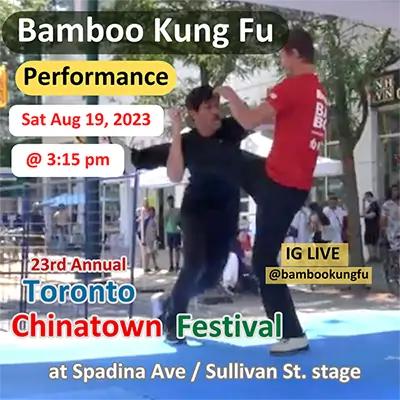
Bamboo Kung Fu students will perform Chinese martial arts on stage at the 23rd Toronto Chinatown Festival on Saturday, August 23, 2023. Our show will begin at 3:15 pm (UTC/GMT -4).
The martial arts show will be held at Spadina Avenue and Sullivan Street.
More - Martial art performance at the 2023 Toronto Chinatown Festival
Stances - The Most Important Secret in Martial Arts Practice
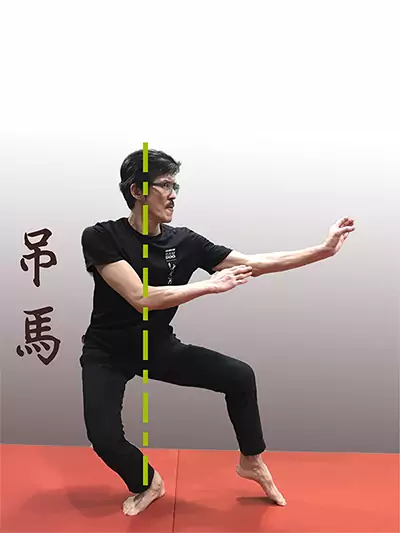
Stance is the ultimate foundation in martial arts practice. Stance is the essence of any kung fu practice. Without it, the quality and leverage of the kung fu techniques will not be effective.
More - Stances: the most important foundation in martial arts practice
Punching Power “Leaks”: How Bad Posture Lowers Punching Power
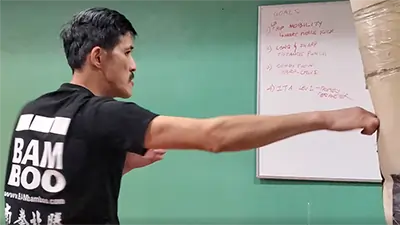
Does bad posture reduce punching power in kung fu? Yes. Forward-rounded shoulder posture reduces the leverage of the kinetic chain and affects punch accuracy, especially in Buk Sing Choy Li Fut kung fu.
More - How Bad Posture Causes Punching Power Leaks
Kung Fu Online Live Martial Arts Classes Long Distance Learning
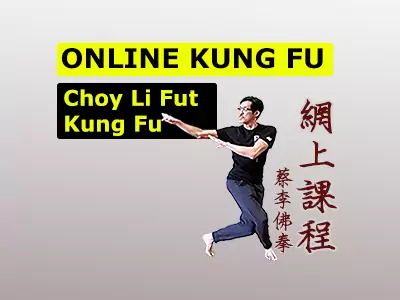
Online live interactive martial arts classes in the comfort of your home. Go to kung fu classes without travelling
More - Online Kung Fu classes
LIVE Online Kung Fu-Blind River, Elliot Lake, Thessalon, Bruce Mines
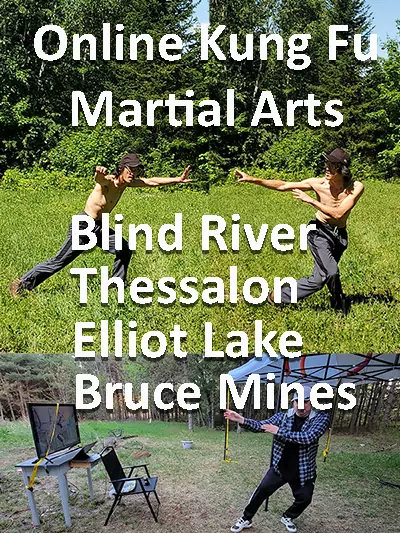
LIVE Online Kung Fu in the townships of Blind River, Elliot Lake, Thessalon, and Bruce Mines in northern Ontario.
Our online classes are cast LIVE from our location in downtown Toronto. Our online classes are Hybrid classes. This means the online classes are run together with in-person classes.
More - Online Kung Fu-Blind River, Thessalon, Elliot Lake, Bruce Mines in northern Ontario
Adult kung fu
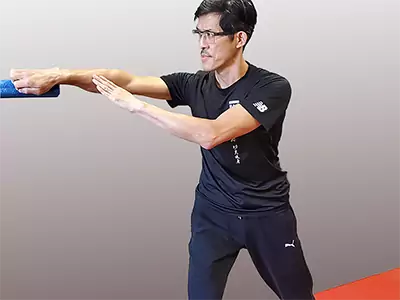
In-person and online options available.
Choy Li Fut kung fu is a dynamic martial art style with a diverse repertoire of movements. Class curriculum:
Primary goal: Improve overall fitness.
Secondary goal: Gain self-defence knowledge, Foster good biomechanics and posture to help you in day-to-day activities of daily living (ADL).
Everyone is welcome, with or without previous martial arts training experience.
More about Adult kung fu
Children kung fu

In-person and online options available.
Studies have shown the positive trends of long-term participation in physical activity programs such as martial art. Such programs help improve children’s executive functions i.e., creativity, flexibility, self-regulation, discipline, and working memory functions.
By instilling good movement patterns in the children’s kung fu program, children will gain the foundation which will set them up for a healthy and active lifestyle.
More about Children's kung fu
Essentrics™-stretching, strengthening, mobility full body exercise
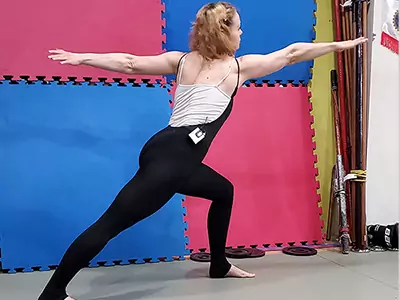
In-person and online options available.
Essentrics™ is a full-body workout that draws inspiration from ballet, Tai-Chi, that develops lean, strong muscles and improves your posture. The fluid and dynamic movements nature of the exercise is low impact and improves joint health. Lighten up your mood and move to the rhythm of the songs playlist.
More about Essentrics™
